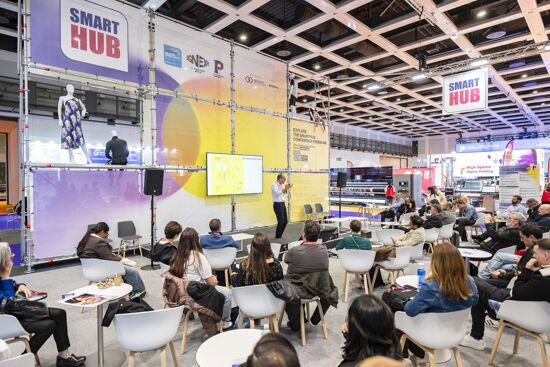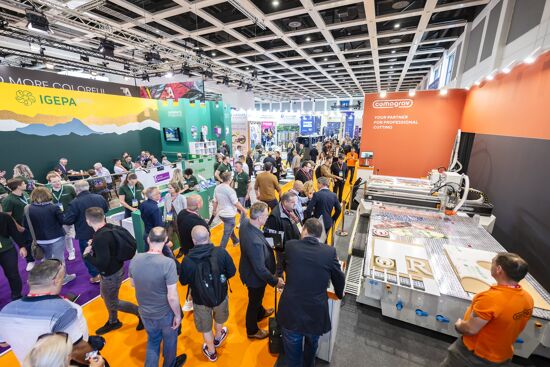Kodak’s Sustainability Report
.png?width=750)
Laurel Brunner shares the findings from Kodak's sustainability report for 2020 which covers the period from 2018 - 2020. Laurel emphasizes that sustainability is as much about a company’s survival as it is about the environment.
A few years ago, it was tempting to write Kodak off as a spent force. And yet the 130-year-old company is still here, and its 4300 employees are still making a difference. Not all of those people contribute directly to the graphics industry but amongst the companies many patents, 2500 are print related. Kodak recently published its sustainability report for 2020, that covers 2018 to 2020. The most striking thing about this report is the reminder that sustainability is as much about a company’s survival as it is about the environment.
According to Dick Szembrot, Kodak’s Director for Health, Safety and the Environment, the company’s “largest business today is commercial printing”.
As one might expect Sonora, Kodak’s processless plate technology, features heavily in the review of its sustainability efforts. Kodak estimates that paired with Kodak computer-to-plate systems, energy savings of 95% are possible using processless plates. However, there is no reference figure for this.
Getting rid of plate processing with a shift to process-free is an obvious choice for any printing company keen to cut their environmental impact. A mandatory expectation of processless plate production should also be a fundamental requirement for any print buyer who wants to be environmentally accountable, from packaging to book printing.
Kodak’s energy usage has reduced, and the company has experienced a 26% decrease in GHG emissions. This is indexed to revenue over the time frame, but the company provides no reference figure. Measures to reduce CO2 emissions by 1400 tonnes of CO2 annually are underway but the effort to reduce both CO2 emissions and water use over the last few years has already yielded positive results. Waste CO2 has decreased from 0.48 metric tonnes in 2018 to 0.3 in 2020. Water usage is also lessened from 1.99 million cubic metres in 2018 to 1.52 million cubic metres in 2020. In 2021, Kodak’s specialty inks and dispersions manufacturing cut energy usage by 41.6% eliminating 50 metric tons of CO2per year.
Other key points from the report include a 55% increase in Kodak’s solvent recovery business. This has seen the company increase to 24.62 million kilos the amount of solvents recovered from non-Kodak sources. Kodak remanufactures used these solvents, so that they can be reused in production applications that would otherwise require new materials thereby contributing to circular economies.
Kodak’s story has been one of sustainability over its 130-year history. Today, the company is focusing on the next phase of its business as a sustainable developer and provider for the printing and publishing industries. Read the full report here.
Cover Image Credit: Kodak
Source Information: This article was produced by the Verdigris Project, an industry initiative intended to raise awareness of print’s positive environmental impact. This weekly commentary helps printing companies keep up to date with environmental standards, and how environmentally friendly business management can help improve their bottom lines. Verdigris is supported by the following companies: Agfa Graphics, EFI, Fespa, Fujifilm, HP, Kodak, Miraclon, RicohSplash PR, Unity Publishing and Xeikon.
Topics
Interested in joining our community?
Enquire today about joining your local FESPA Association or FESPA Direct
Recent news

Industry Experts Explore the Evolution of Smart Manufacturing in the Textile Industry
A FESPA SmartHUB roundtable at Personalisation Experience 2025 discussed smart manufacturing's transformative impact on the textile industry. Experts highlighted the shift to on-demand customisation, driven by digital printing, data analytics, and automation. Key takeaways included enhanced machine control, significant waste reduction through intelligent software and colour management, and improved sustainability via energy efficiency and near-shoring, ensuring agility and environmental responsibility in textile production.

FESPA 2025 gathers leading visionaries from across the speciality print industry in Berlin
FESPA Global Print Expo 2025, European Sign Expo and Personalisation Experience (6 – 9 May 2025, Messe Berlin, Germany) welcomed Visionaries from across the speciality print industry to shape the future of print, develop forward-thinking business strategies, and explore innovative ways to translate emerging industry trends into tangible growth opportunities.

Exploring Cutting-Edge Textile Printing Innovation with Adobe Print Engine 7
Adobe PDF Print Engine 7, launched at FESPA Global Print 2025, significantly advances textile printing. Debbie McKeegan shares how it automates non-white substrate management and RGB colour handling, expands colour gamuts with in-RIP multicolour transparency blending, and streamlines workflows for efficiency and sustainability. This update boosts customisation, reduces waste, and positions businesses at the forefront of digital print innovation.

FESPA Global Print Expo 2025 - Overall Highlights
FESPA Global Print Expo, Europe's leading print and signage exhibition returned to Messe Berlin from 6 - 9 May 2025.